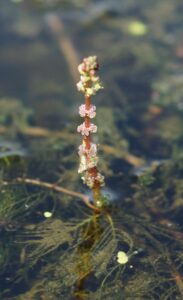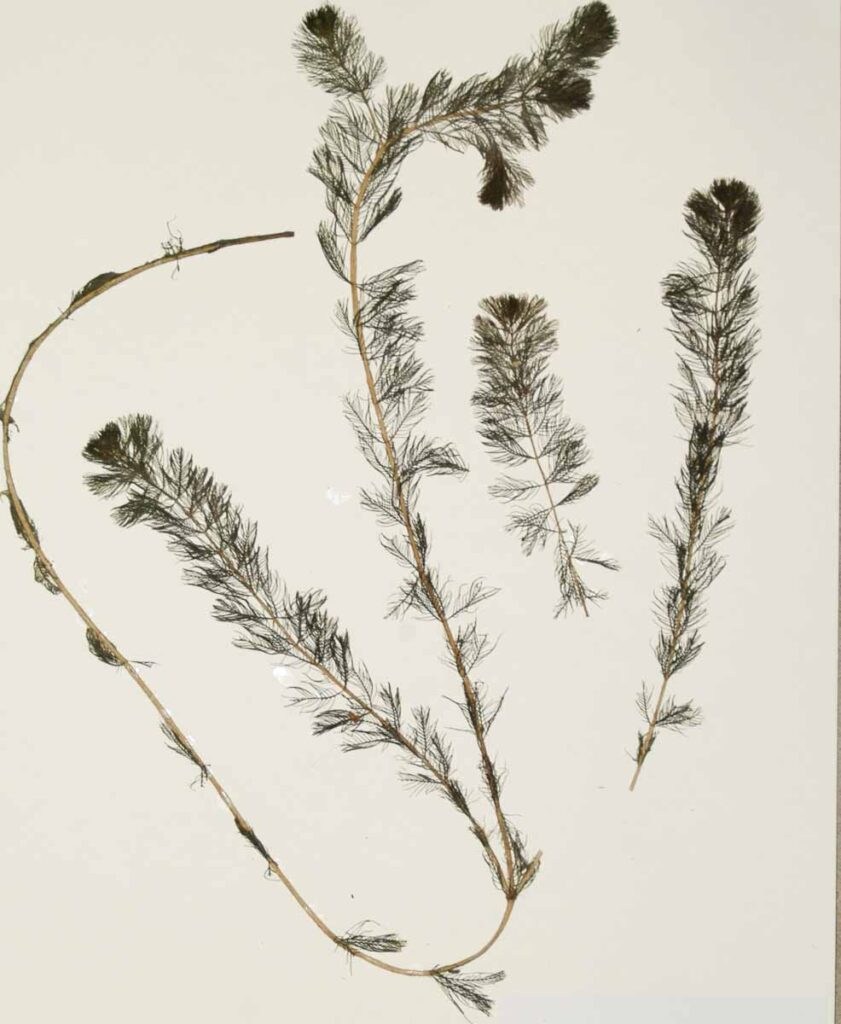Plant Family: milfoiln Myricaceae
Eurasian Water-milfoil (Myriophyllum spicatum) or EWM is a highly invasive submergent aquatic plant. EWM invades both pristine and polluted, turbid lakes, rivers, and deepwater wetlands. The most common way it is transported from lake to lake is by fragments transported on boats and boat trailers.

Like many aquatic plant species, it does not frequently reproduce by seeds, but most often vegetatively through spreading roots, and in the case of Eurasian Water-milfoil, it spreads great distance by fragments. The plant is said to auto-fragment; this means a portion of the stem is purposely weakened and causes a segment of it to break off. The fragment then floats away, getting caught in other vegetation or sinking. The sinking fragment then roots to the bottom, creating a clone of the parent plant. This ability to easily form new plants from fragments makes control by cutting and pulling plants difficult because it could result in plants’ spread.
Once firmly established on a larger waterbody, it is a question of whether to manage the abundance of the plant or not. EWM may only be problematic in a few areas on some lakes, even after decades post-invasion, and no control is necessary. On other lakes, the entire lake may be infested from shore to shore. In this situation, herbicide treatments are not advised, but cutting is a better option. Spreading of the plants by fragments in this situation does not matter since the invader is already well established. Cutting will help navigation and improve fish habitat. Where water levels can be managed by drawing the water down and exposing the lake bed can be an effective method of control, although a very controversial management practice at the local level.

